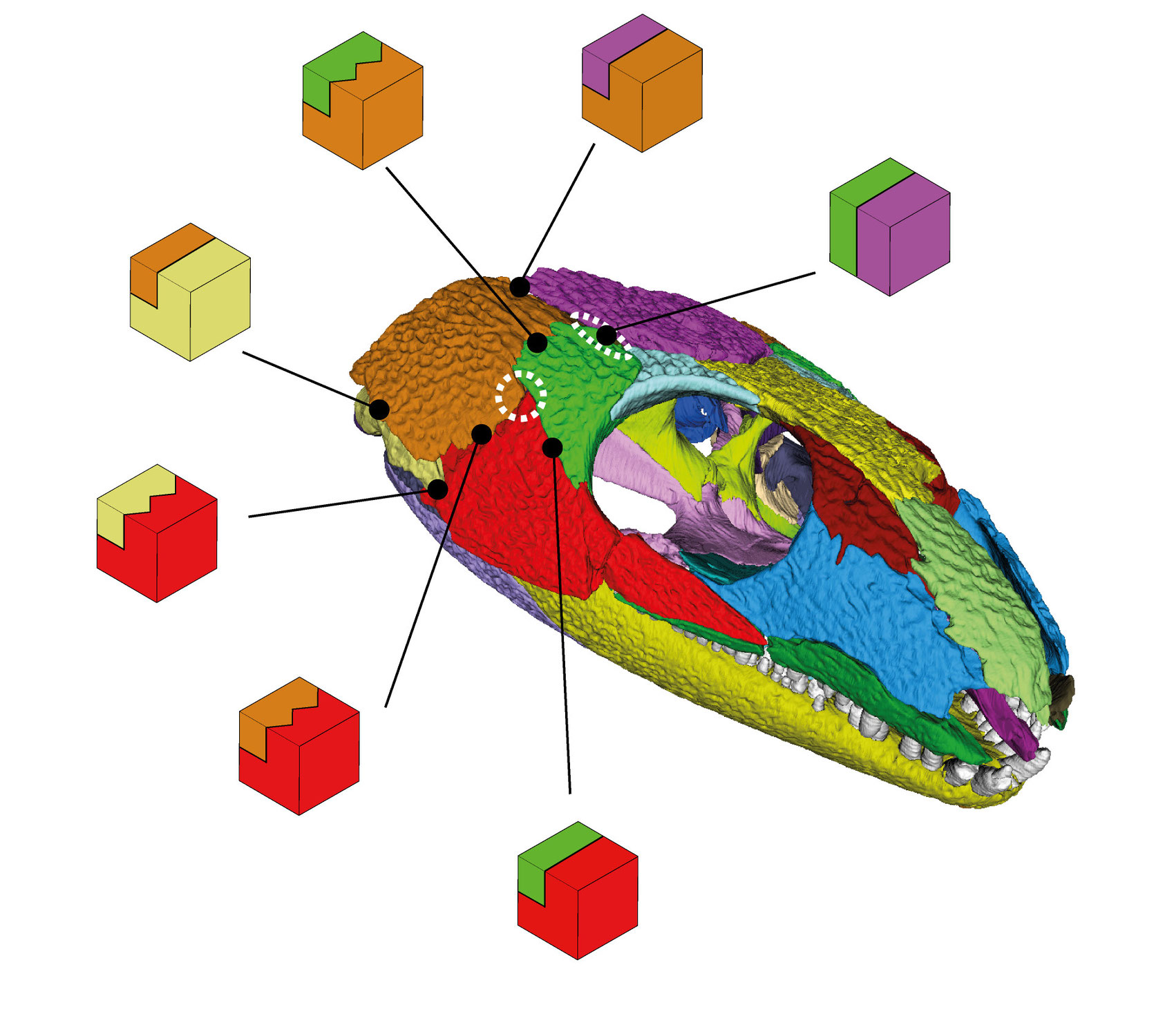Skull evolution · 26. May 2022
Temporal openings likely formed by the reduction of functionally "unneeded" areas in the temporal dermatocranium. We analyzed the skull sutures in the early amniote Captorhinus aguti to check whether potential pre-stages for temporal openings can be found in an early "anapsid".
Pterosaurs · 26. August 2021
Me and my colleagues Jahn Hornung (Niedersächsisches Landesmuseum Hannover), Benjamin Kear (Museum of Evolution Uppsala), and Sven Sachs (Naturkunde-Museum Bielefeld) published a study in Acta Palaeontologica Polonica, in which we describe a new pterosaur fossil from the Lower Cretaceous of Northern Germany. The specimen was found in lower Valanginian strata of the Sachsenhagen clay pit and consists of a fragmentary mandible. The fossil is housed in the Ruhr-Museum, Essen, Germany
Skull evolution · 19. June 2021
Me and Ingmar Werneburg (Senckenberg Centre, University of Tübingen) published a review paper on the morphology and macroevolution of the temporal skull region in Tetrapoda in Biological Reviews. Next to a general overview about the research history of the temporal region, we provide a new morphological classification scheme based on the number and arrangement of temporal openings. This study forms part of my doctoral thesis.
Thalattosuchians · 02. June 2020
After spending the last 20 years as a supposed pliosaur, it could be demonstrated by me and my colleagues that the marine reptile exhibited in the Heimatmuseum Ebermannstadt (Bavaria) is actually a metriorhynchid crocodile. I now had the honor provide the museum with an updated text for the exhibition and to organize a life reconstruction for this very rare find.
Thalattosuchians · 01. April 2020
Contrasting to the late Upper Jurassic lithographic limestones, the early Upper Jurassic strata of Southern Germany are comparatively rare in marine reptile remains. In my first study as a leading author we described the remains of two large-bodied marine crocodiles from the early Kimmeridgian of Southern Germany, showing they belong to a novel branch of metriorhynchids, preliminarily called the "E-clade".





